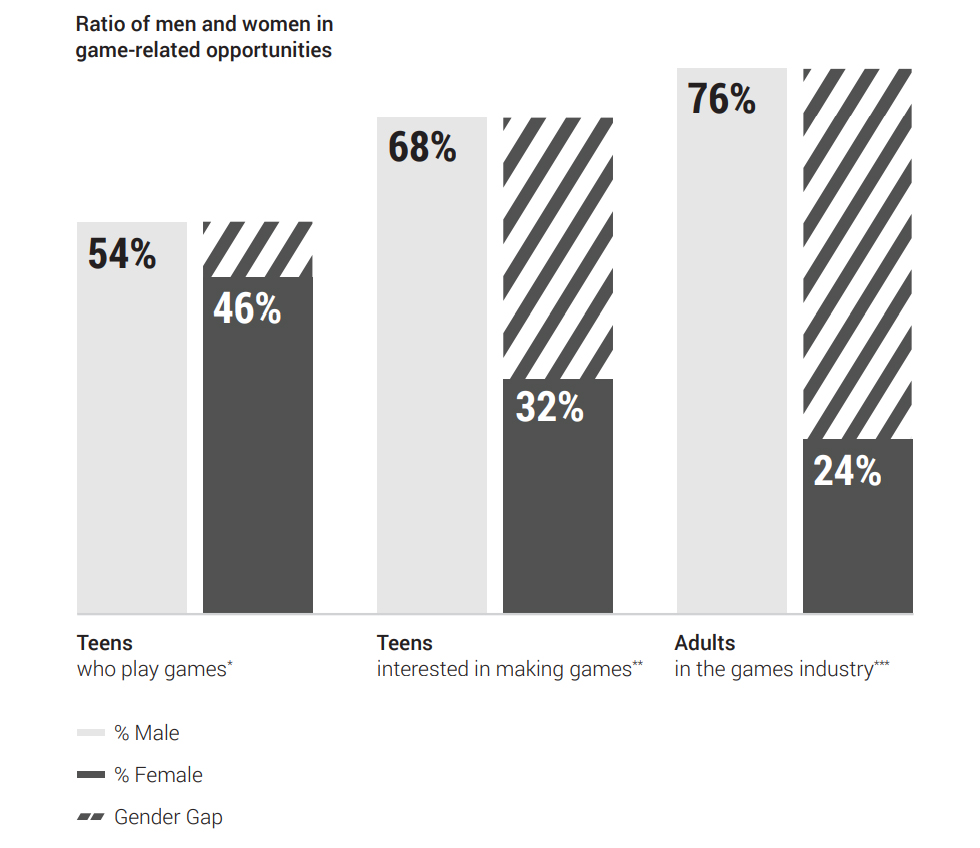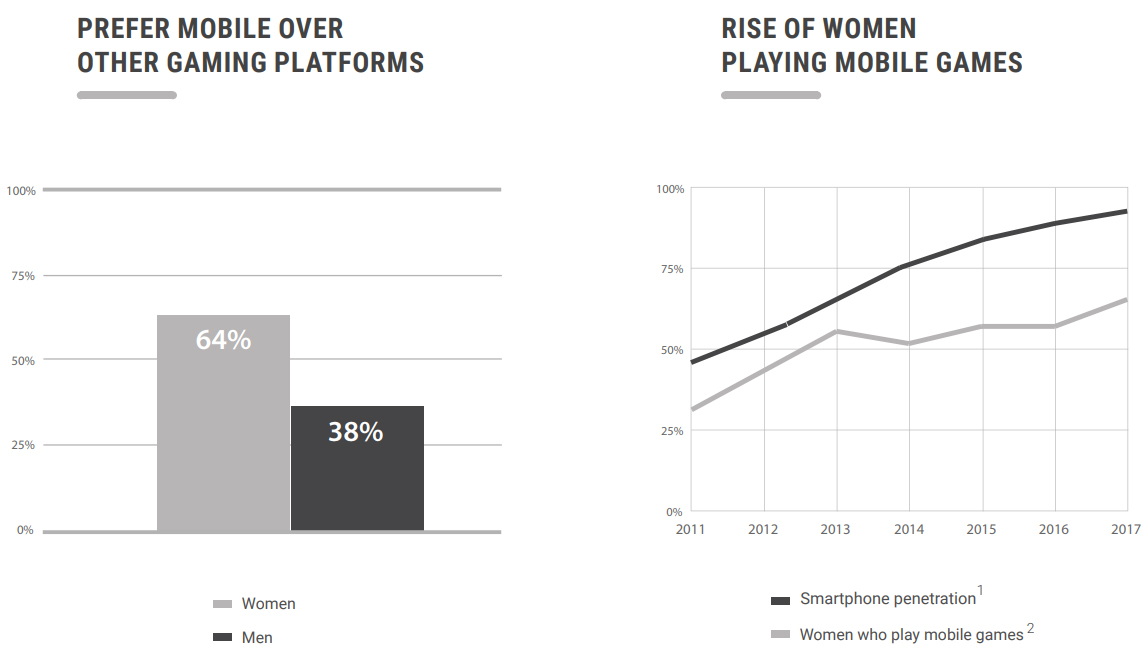Google Play and the analytical company Newzoo have published the results of a study on how American teenage girls see their career prospects in the field of mobile game development. According to researchers, many girls who could potentially engage in game design do not see a place for themselves in the industry because of stereotypes around games.
The audience of teenage gamers consists of half girls.
Most of the girls interviewed by researchers say that they have been playing video games for many years – even before they had their own smartphone or tablet, they played on their parents’ devices.
-
- 81% of the girls surveyed not only play games, but also discuss them with friends. For many, games are an integral element of social life, a constant topic for communication.
-
- 69% of respondents answered positively to the question whether they had played a new mobile game for themselves in the last week.
-
- 55% of the girls surveyed told the researchers that they had an idea for a game. The concepts were very different: from multiplayer arcade games to RPG.
Of the total number of teenagers interested in a career in the field of games, girls make up only a third.
Interest in games and technology correlates with the age of the respondents. Older girls are less likely to include games, computers and gadgets in the area of their main interests.

The decline in interest in games and technologies in accordance with the age of teenage girls.
Analysts attribute this to existing gender stereotypes in the industry.
Older children are more susceptible to them: for example, when respondents were asked to draw “a person engaged in creating games,” eighth–graders mostly drew people of their own sex, and high school girls – men.
Schoolgirls from high school and admit themselves: they often face the stereotype that games, technology or geek culture is a man’s business. And this despite the fact that in fact in the USA 65% of the female population aged 10-65 years play games.
Children have a poor idea of career opportunities in the gaming industry.
Many respondents – not only girls, but also boys – say that they did not have the opportunity to try to create their own game, for example, in lessons or in sections. Of all the teenagers surveyed, 9% of girls and 15% of boys said they had worked on their game before.
Usually children talk about creating games in the context of programming: for example, they are familiar with initiatives to teach coding through the creation of games. However, many people find programming too complicated, so they don’t see themselves in the gaming industry.
But when the conversation turns to other aspects of game development: scenarios, development of concepts, creation of game art – more girls show interest in this area.

Career interests of teenage girls in the field of game creation.
This suggests that few girls fully understand the process of game development: for example, those who like to play games and draw say that they have not seen before how one hobby can be connected with another.
Thus, under the influence of stereotypes, there is a situation in which girls who would like to create games lose their interest in game development.
This state of affairs is reflected in the industry: only a quarter of adults involved in the creation of games are women.

Gender distribution among teenagers and adults regarding careers in the gaming industry.
Stereotypes and insufficient representation of women eventually affect the game content itself.
This can be seen in the example of mobile titles.
On the one hand, this is a market with a predominantly female audience: 64% of all gamers who prefer mobile devices to other platforms are women.

The chart on the left shows the percentage of female players who prefer mobile devices to other platforms. The graph on the right shows the growth in the number of female players amid the spread of smartphones.
On the other hand, the game content is not adapted to the real situation on the market.
-
- In the Google Play store, male characters are found on the icons of popular gaming applications 44% more often than women.
-
- 60% of female players answer in social surveys that less than a third of all gaming applications are targeted at a female audience.
Google Play aims to change the current situation and attract more girls and women to create mobile games. To do this, the company has several initiatives:
-
- In the Google Play section there is a special selection of indie games with bright and interesting female characters.
-
- The company has a program to support independent developers Infinite Deviation: Games, where authors with the best concepts of inclusive games receive funding for their projects. (On the last page of this study on representation in mobile games, Google Play has posted a checklist for developers of inclusive gaming content.)
-
- Google Play has joint programs with educational projects that are aimed at girls interested in game development. Together with Girls Make Games and Made With Code, the company holds contests for game development among girls.
Also on the topic:
- Female characters in runners are more expensive than male ones
- Cliches and stereotypes
A source: Google Play
